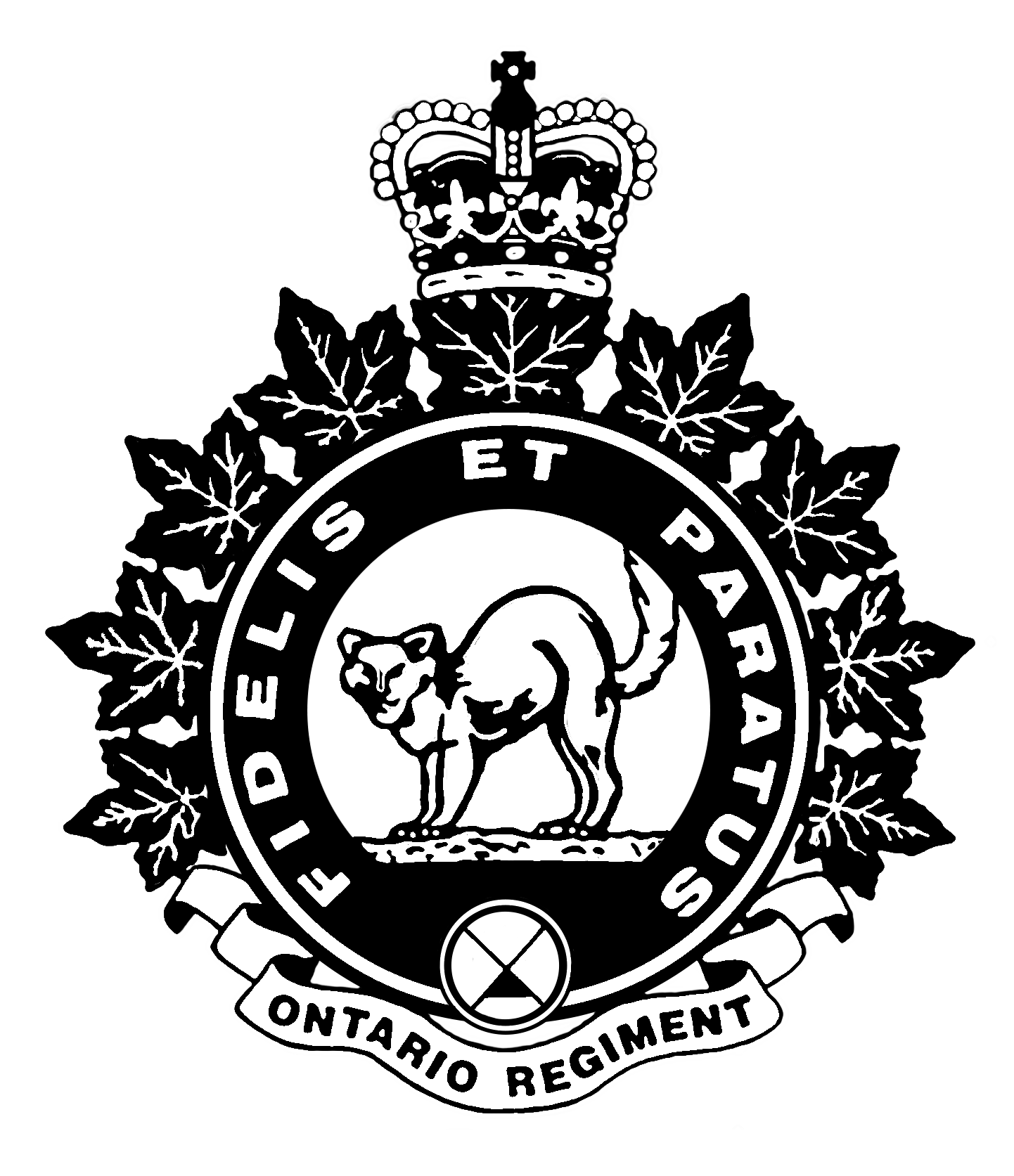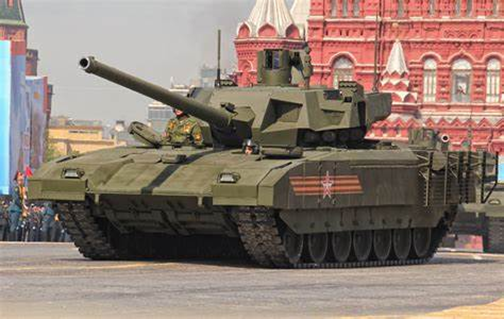There are seven different tank families in the Russian inventory. Namely:
- T-54/55
- T-62
- T-64
- T-72
- T-80
- T-90
- T-14
To tell them apart we look at specific identification clues. Making that more difficult, the later variants tend to have Explosive Reactive Armour (ERA) bricks hiding the actual vehicle. This document will assist in identifying the families. There are too many variants to note here.
Suspension
The first features to determine which vehicle is which is the suspension. This is important as other than side skirts – the wheel layout is normally visible. This is the first item to look for. The T-54/55 and the T-62 have five road wheels. The T-14 is unique with seven roadwheels and the rest have six. Each has a different layout. However the sprocket drive is always at the back and the idler wheel is always in the front.
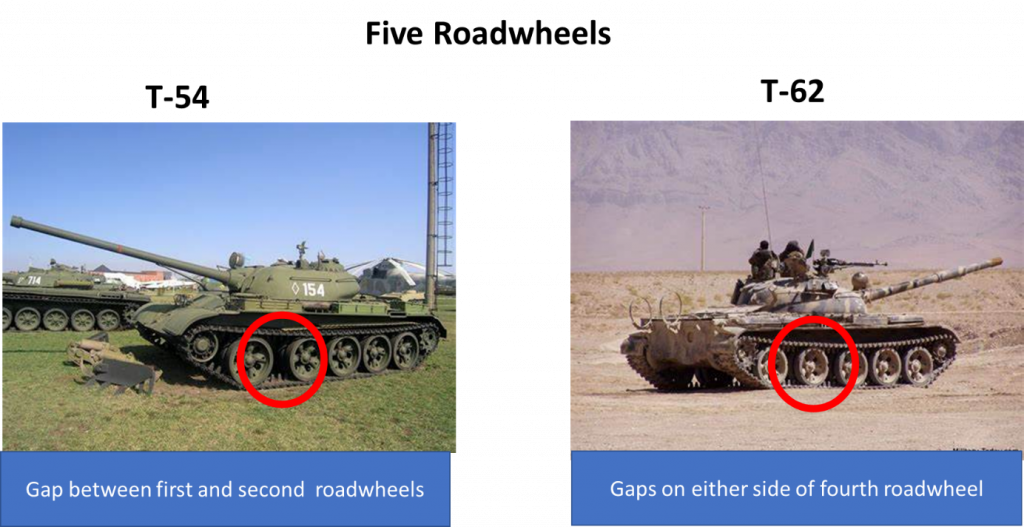
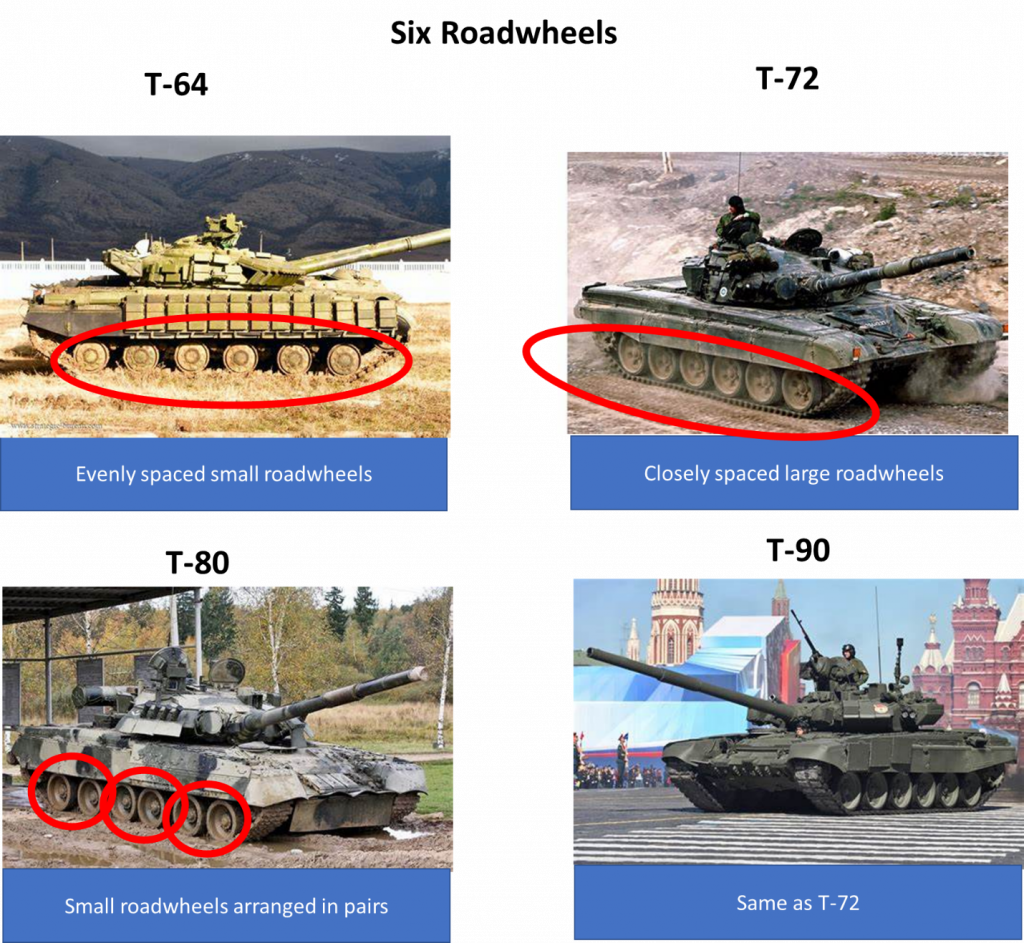
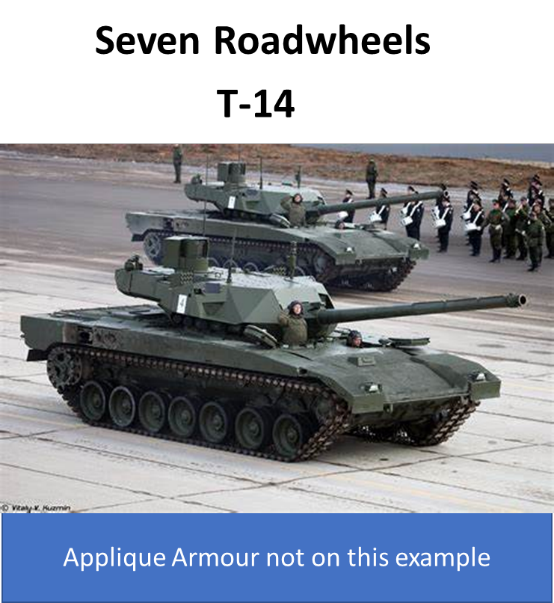
Engine Exhaust
A second feature that cannot be obscured by ERA are the engine exhausts. Tanks that use standard V-12 Diesel engines (T-54/55, T-62, T-72, T-90) tend to exhaust out of an exhaust port on the left rear of the hull.
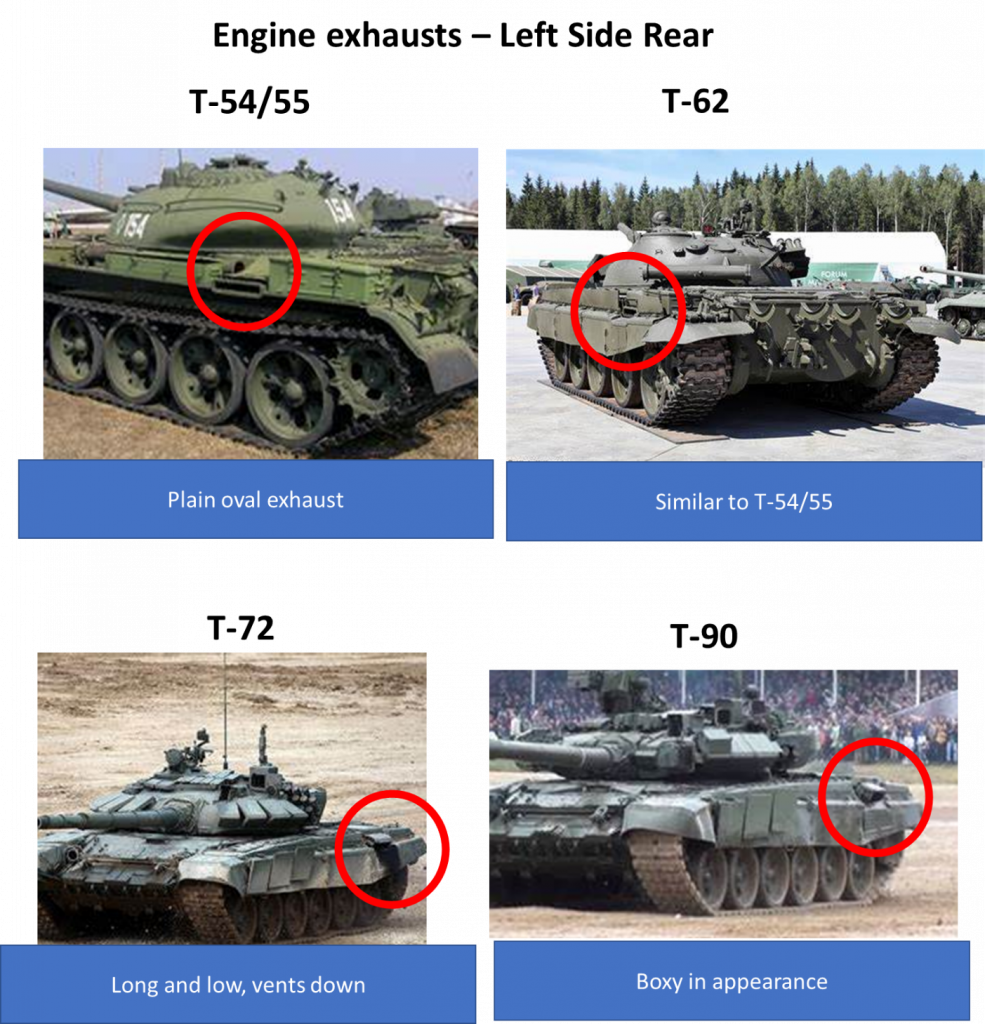
The T-64 uses a distinct horizontally opposed diesel engine and the T-80 uses a gas turbine. For these two vehicle families, the exhaust is directed out of the rear of the tank.
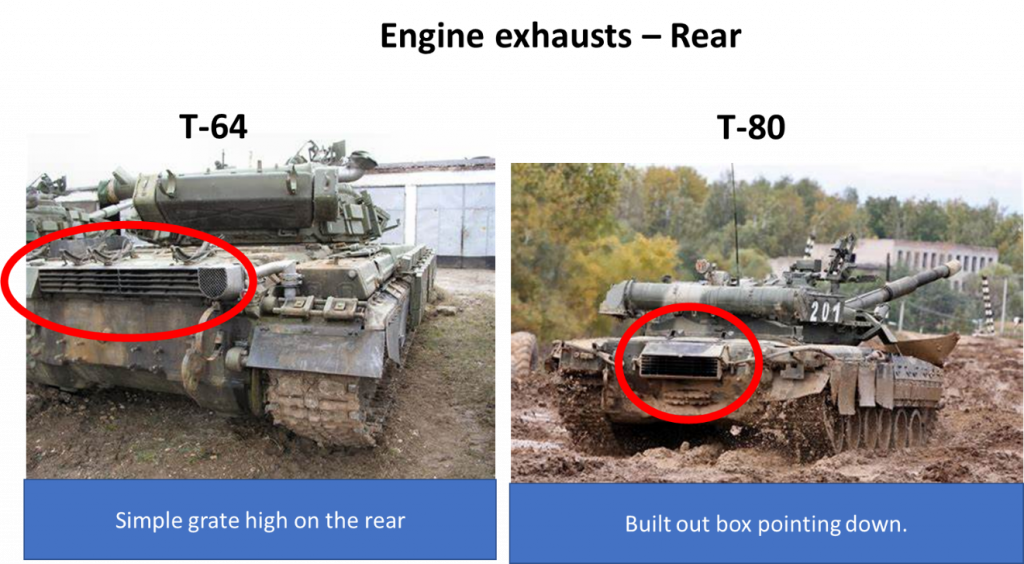
Explosive Reactive Armour
There are at least three types of ERA used by Russian Tanks. Also, there are many non-Russian upgrades that can be found on exported tanks. For these reasons, trying to recognize individual variants is difficult but possible. It is however, outside of the scope of this document.
Turret Furniture
Turret furniture refers to the lights, masts, machine guns, bins, etc. that gets attached to the turret. These can be used for recognition purposes but cannot be relied on.
Much like relying on the ERA, there are too many variations due to modification and upgrades from both Russian and third-party companies. Also, turret furniture can be damaged or removed by accident, combat, or even crew/maintenance activities. For example, snorkel tubes are visible on the turrets of T-62s and T-72s. When these tanks are exported to the Middle East, those snorkel tubes are usually removed as not being needed in that environment.
Often, these can be hidden by baggage, camouflage, or other things such as infantry tank riders.
Shtora-1
The Shtora-1 (Russian for “Curtain”) is an Optronic countermeasure system which is used on only T-80s and T-90s (and Ukrainian T-84s). It is designed to disrupt the target acquisition abilities of anti-tank missiles that rely on Infrared or laser designators.
The system is composed of
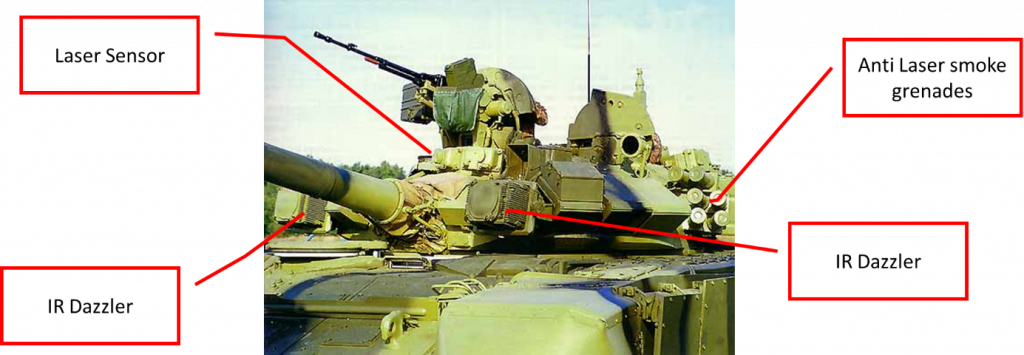
- Grenade launchers or dischargers which can fire grenades dispensing an aerosol smoke screen opaque to infrared light.
- A laser warning system with precision and coarse heads.
- A control system,
- Two infrared lights, one on each side of the main gun, continuously emit coded pulsed-infrared jamming when an incoming ATGM has been detected.
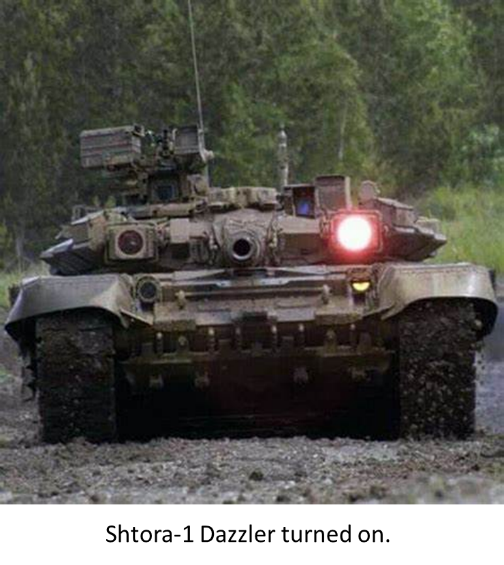
The Dazzler boxes on either side of the main gun provide a very clear recognition item.
The T-14 does not use the Shtora-1 but a more advanced Afghanit Active Protection Systems with both hard and soft kill capabilities.
Difference between T-54 and T-55
Most of the upgrades made to the T-54 to produce the T-55 are not visible from the exterior and since most T-54s were upgrade to T-55 standards, there is even more confusion. The upgrades include:
- Nuclear, Biological, and Chemical (NBC) protection suite
- Additional Electric starter (rather the T-54’s compressed air starter)
- New engine
- Increased ammunition load in “wet” stowage
- Removal of the DShK anti-air machine gun
- Upgraded sights
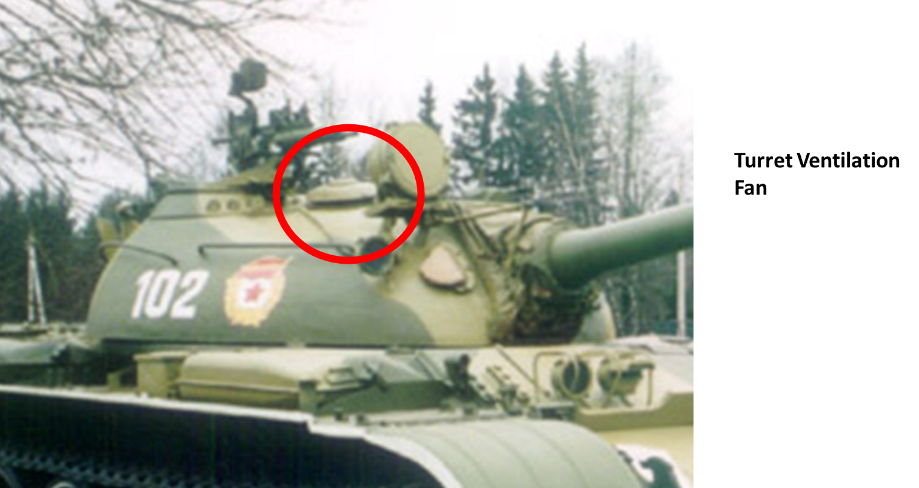
Other than climbing into the vehicle, the only way to tell the difference is by looking at the turret ventilation system. T-54s will have a mushroom shaped air intake on the front right of the turret. However, many T-54s were upgraded to T-55 standards. So, if it doesn’t have the intake, it is a T-55. But if it has an intake – it might still be a T-55. Similarly, many will point out the lack of a fume extractor as a recognition point for the T-54. Again, may not be true. In fact, some countries affixed fake extractors to confuse observers.

